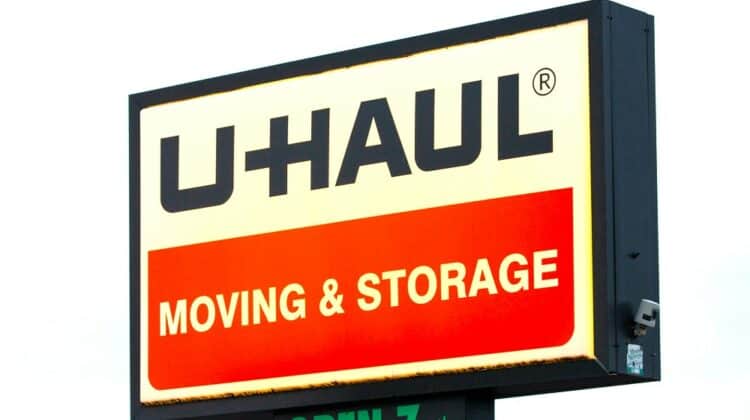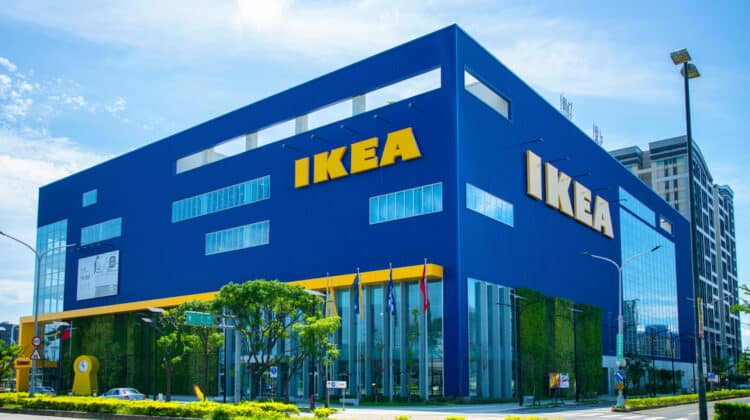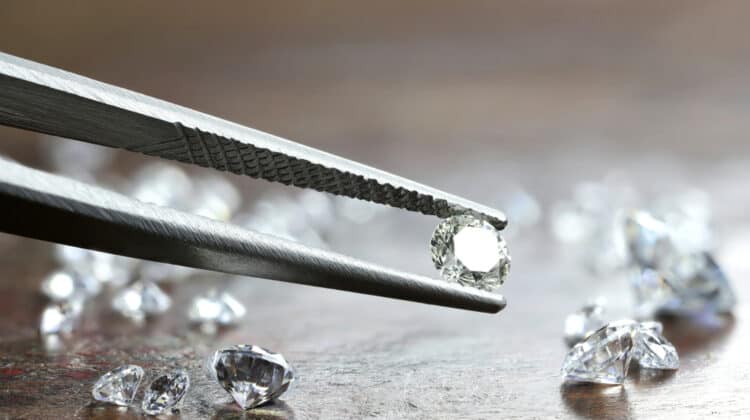
You may have heard before that some thieves target certain vehicles for their catalytic converters.
Catalytic converters are essential in making running a car safer.
They make harmful toxins and gases less harmful.
While they may sound valuable, you may wonder why thieves have an interest in them.
If you need to buy a new catalytic converter, then you might also wonder why they’re so expensive.
Why Are Catalytic Converters So Expensive? (10 Reasons)

The average price of a catalytic converter is between $150 and $1,200.
Catalytic converters can be expensive based on factors such as the cost of materials used to make them, the quality of production, the high demand for them, and the type of converter they are.
Let’s look at these factors in more detail.
1. Platinum Costs

A catalytic converter is made of a few precious metals.
One of those precious metals is platinum.
Platinum is a popular material that’s used in jewelry making.
Some varieties can be even more expensive than gold.
That’s because platinum has a greater level of durability than gold.
Gold is soft while platinum is strong.
Platinum is also denser and heavier than gold and other precious metals.
Since the value of precious metals primarily comes down to their weight, platinum has a higher value.
It’s heavier.
Platinum is also a finite resource.
There’s only so much of it in the world.
Eventually, miners won’t be able to procure it any longer.
The only platinum in the world will be the existing products that are made of it.
Platinum makes catalytic converters expensive because manufacturers have to spend a lot of money on sourcing platinum.
Since platinum is expensive, they have to cover that cost by putting an expensive price on their converter.
Catalytic converters are expensive because they are made of platinum which is an expensive precious metal.
2. Palladium Costs

Platinum isn’t the only precious metal used in catalytic converters.
Palladium is another precious metal used to make catalytic converters.
Like platinum, it’s also used in jewelry-making.
However, palladium has many other uses in both the automotive and the electronics industries.
The problem with it being useful in so many different industries is that it’s leading to more and more expensive prices for palladium.
Palladium plays an important role in helping curb emissions in catalytic converters.
More and more countries have an interest in cutting emissions.
As such, they’re implementing stricter standards on car manufacturers.
They expect them to produce cars that don’t produce as many emissions.
Yet, palladium is also useful in the electronics industry.
As a result, you have a lot of different industries all trying to get their hands on the same expensive resource.
Like platinum, palladium isn’t in high supply.
It’s a finite resource.
With more people mining it, eventually, it’s going to disappear.
There also isn’t typically enough palladium to go around.
As such, manufacturers have to spend a good amount of money to source their palladium to make their converters.
Since they’re taking on more costs, they’re going to sell their converters at higher prices.
Catalytic converters are expensive because the price of palladium is high.
3. Rhodium Costs

A final precious metal used to make catalytic converters is rhodium.
Rhodium is a very rare metal.
That’s because it’s usually a by-product of platinum or copper refining.
It doesn’t exist in its own state in large quantities.
Because it’s primarily a by-product, there isn’t a lot of it.
The problem with that is that there’s high demand for rhodium.
It has many uses in several industries.
Part of the reason it’s so popular is that it’s corrosion-resistant.
Other metals can fall prey to corrosion.
They’ll start to rust away and grow weak.
Rhodium doesn’t have that problem.
That’s why a lot of jewelry makers use rhodium.
It ensures the jewelry doesn’t rust over time.
Rhodium is typically more expensive than either platinum or palladium.
Because of its high price, car manufacturers have to spend a lot of money to get their hands on the metal.
Since their production costs are high, they need to offset those costs with higher prices on their converters.
Catalytic converters are expensive because the price of rhodium is extremely high.
4. Higher Environmental Safety Standards

In the past, catalytic converters were primarily used for keeping the operation of a car safe.
Without them, harmful toxins would be released from the car’s engine.
They could enter the cabin of the car and cause great harm to those inside.
Manufacturers started making catalytic converters to remove those toxins and make driving cars a lot safer and healthier.
Then came the realization that cars contribute to carbon emissions.
With climate change starting to wreak havoc on the planet, governments across the world are demanding that car manufacturers make catalytic converters with better emissions-reducing capabilities.
With those high standards have also come high prices on catalytic converters.
One of the reasons is that manufacturers have to use higher-quality materials to make new catalytic converters.
Since their material costs are higher, they need to offset them with higher prices.
Some companies also likely put a lot of money into their research and development teams to try and come up with new designs to meet higher standards.
This is expensive, and it also means that manufacturers across the world are also trying to make high-quality catalytic converters.
There are a lot of companies all trying to buy materials before the other ones do.
All those factors make manufacturing costs a lot higher.
Catalytic converters are expensive because world leaders are pushing for higher reductions in carbon emissions.
5. High Demand

As a result of higher standards for environmentally friendly cars, there is an increase in demand for catalytic converters.
For one, car manufacturers need them before they can assemble the car and sell it.
When car manufacturers have large quotas to meet, they need to buy a lot of catalytic converters.
That increases the cost since there are only so many converters on the market at a time.
The high demand from the auto industry is driving up the price.
There’s also been a problem with the thefts of catalytic converters.
Because catalytic converters contain some expensive precious metals, they’re very valuable.
Thieves can sell converters to other people who might be able to break them down for the precious metals.
Others might try to resell the converters on the black market.
Because of the precious metals they contain, thieves can sell them for a lot of money.
With a higher number of thefts occurring, people are in need of catalytic converter replacements.
That only increases the demand further.
When supply is low but demand is high the price increases.
Catalytic converters are expensive because they’re in high demand from car owners and car manufacturers.
6. Steel Prices

Although a lot of attention goes to the precious metals used in catalytic converters, there’s also a more common material that is increasing their price.
Stainless steel is often used in the manufacturing of catalytic converters.
Although stainless steel is a popular material used in several different industries, it’s also a bit on the expensive side.
That’s because stainless steel requires a few more steps to manufacture than just steel or iron.
It’s made to resist corrosion and is usually more durable.
Stainless steel can sometimes fluctuate in price.
Sometimes it’s low, but other times it can be quite expensive.
It usually comes down to sourcing.
If there’s a large amount of steel on the market, then the price is going to be lower.
When there is a dwindling supply of steel, then the price is going to be higher.
Steel, like other metals, is also a finite resource.
While manufacturers can always recycle steel, they won’t always be able to mine iron and transform it into steel.
The fact that it’s a finite resource also makes it expensive.
Catalytic converters are expensive because they are made with steel which can be pricey.
7. Direct-Fit Catalytic Converters

When telling your repairman that you need a catalytic converter, you may be a bit surprised when they ask you what type.
There are a few different types of catalytic converters.
The two most common are universal converters and direct-fit converters.
Universal converters can fit in almost any car.
As long as the car has the appropriate fitting, the repairman can easily put a new universal converter in place.
A direct-fit catalytic converter, on the other hand, is something a bit more specific.
Manufacturers make direct-fit converters for specific models of cars.
It might fit one car, but it won’t fit another.
That’s because they made the fittings to attach specifically to one type of car.
Direct-fit converters are more expensive than universal converters in most cases.
That’s because direct-fit converters require a bit more manufacturing and testing to ensure they fit the car they are supposed to without any problems.
Another benefit of a direct-fit converter is that they’re relatively easy to install.
As long as you have some tools at home and some understanding of catalytic converters, you can likely replace it yourself.
Catalytic converters are expensive when they’re direct-fit converters since they have slightly higher production costs.
8. Complex Manufacturing

A catalytic converter is essential for a safe, operational car.
If there’s even one problem, then it can leak toxins into the atmosphere.
The process of how converters make the toxic gas inert is also quite complex.
As such, converters have a complicated manufacturing process.
There are quite a few steps, and all the converters need to undergo a lot of testing to ensure they’re effective.
If they’re not, then the manufacturer could face a hefty lawsuit.
Since manufacturing is complex, it’s also more expensive.
Catalytic converters are expensive because they’re complicated to make.
9. Durable

Due to their proximity to the exhaust system and the road, catalytic converters have to be durable.
With rocks, branches, and other debris threatening the undercarriage of your car, the converter needs to be able to withstand heavy abuse.
Luckily, most catalytic converters are quite durable.
The problem with that is that the durability makes them more expensive.
For one, a more durable converter means the company uses high-quality materials to make its converters.
That makes their production costs higher from the start.
Since catalytic converters are durable, it also means that they don’t break down or become damaged as easily.
As a result, a lot of people won’t have to buy a replacement for their car for a long time, if ever.
Since there aren’t many repeat buyers, manufacturers have to make as much money as they can from the initial sale.
Catalytic converters are expensive because they’re durable.
10. Inflation

Inflation has also played a role in making catalytic converters more expensive.
Since inflation makes materials and resources expensive, it means that precious metals, steel, and other materials are more expensive to acquire.
As a result, catalytic converter companies have to spend more money to get the materials they need.
Since they’re facing higher costs, they need to sell their products at higher prices to offset them.
Catalytic converters are expensive because inflation is increasing costs.
NEXT: Why Are Weber Grills So Expensive? (Top 10 Reasons)






















